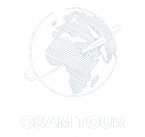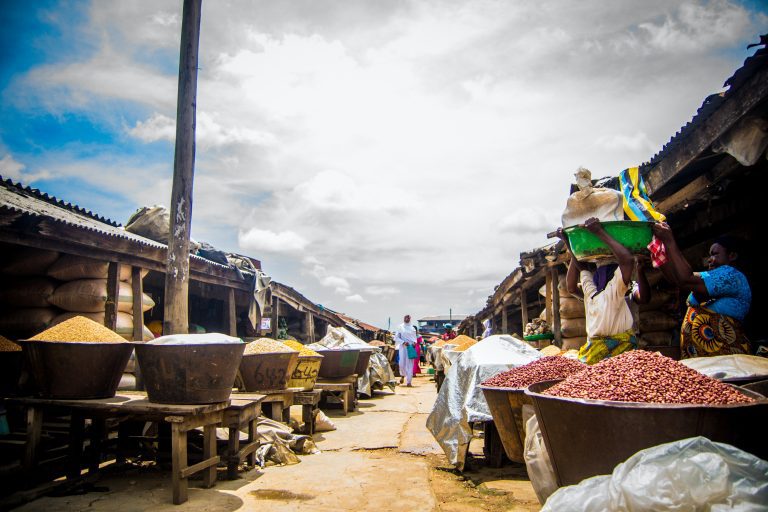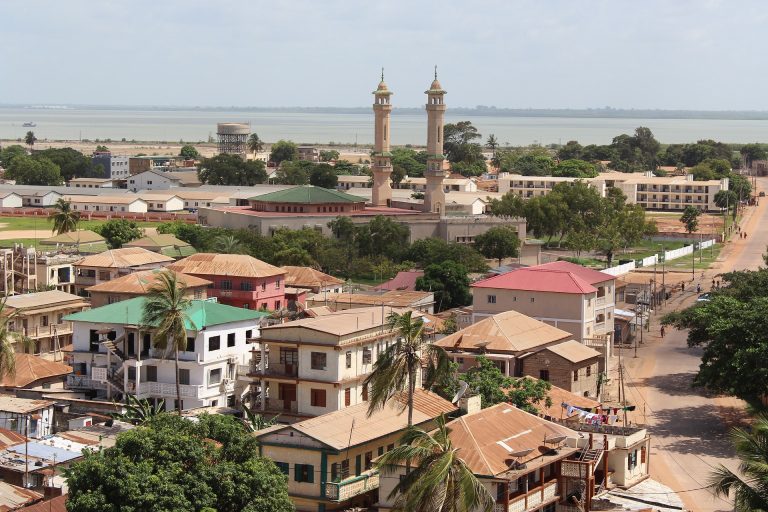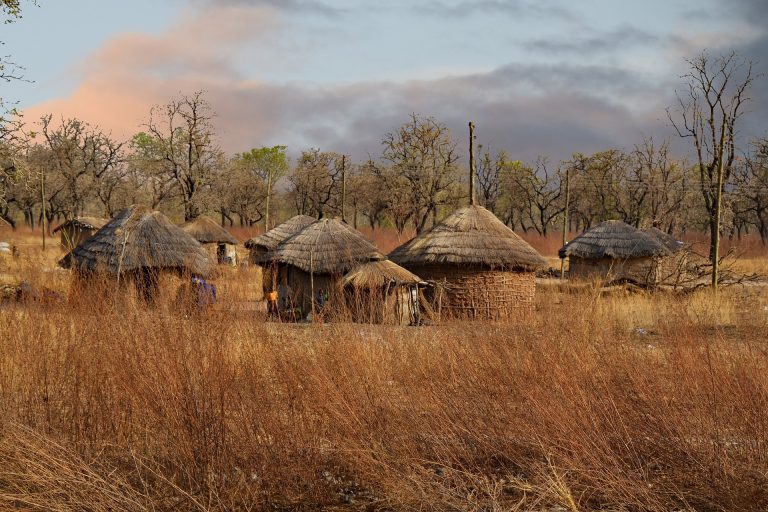ZAMBIA Travel Guide for 2024: Unlock the Magic

Welcome to our comprehensive Zambia travel guide. From the Victoria Falls to the captivating wildlife of national parks, Zambia offers a diverse tapestry of experiences for every traveler.
This Zambia travel guide is your essential companion, providing practical insights and valuable tips to navigate the rich cultural heritage, natural wonders, and vibrant traditions that define Zambia.
What to See and Do in Zambia
Whether you’re an experienced traveler out to explore some of the most famous landmarks in Zambia or someone setting foot here for the first time, there’s never a shortage of things to do or sights to see. Here are the best places to visit in Zambia for first-timers.
- Victoria Falls: One of the largest and most spectacular waterfalls in the world, Victoria Falls is a UNESCO World Heritage Site and a natural wonder. You can admire the falls from different viewpoints, take a boat ride on the Zambezi River, or enjoy some adrenaline-pumping activities such as bungee jumping, white-water rafting, or swimming in the Devil’s Pool, a natural infinity pool at the edge of the falls.

- South Luangwa National Park: Considered one of the best wildlife parks in Africa, South Luangwa National Park is home to a rich diversity of animals, including elephants, lions, leopards, giraffes, zebras, hippos, crocodiles, and over 400 species of birds. You can explore the park on game drives, walking safaris, or night safaris, and stay in one of the many lodges or campsites in the park.

- Lake Tanganyika: The world’s longest and second-deepest freshwater lake, Lake Tanganyika is a paradise for nature lovers and water enthusiasts. You can snorkel or scuba dive in the clear waters, fish for some of the 350 species of fish, or take a sunset cruise on a traditional dhow boat. You can also visit the nearby Nsumbu National Park, which has a scenic shoreline and abundant wildlife.

- Livingstone Museum: The oldest and largest museum in Zambia, the Livingstone Museum showcases the country’s history, culture, and art. You can learn about the prehistoric era, the colonial period, the independence struggle, and the contemporary society of Zambia. You can also see exhibits of musical instruments, traditional crafts, and memorabilia of David Livingstone, the explorer who named the Victoria Falls.

- Mukuni Village: A traditional village of the Leya people, Mukuni Village is a cultural attraction that gives you a glimpse into the local way of life. You can take a guided tour of the village, meet the chief and the villagers, see their houses, schools, and markets, and learn about their customs and beliefs. You can also buy some souvenirs from the craft market, where you can find handmade items such as baskets, masks, and jewelry.

Fast Facts About Zambia
- Climate: Zambia’s climate varies from tropical to subtropical. The dry season, from May to October, offers pleasant temperatures and optimal wildlife viewing. The wet season, from November to April, brings lush landscapes but might hinder some activities.
- Local Currency: The Zambian Kwacha (ZMW) is the official currency. Currency exchange facilities are available at airports and banks. Credit and debit cards are accepted in major cities and tourist areas.
- Power Voltage: Zambia uses a power voltage of 230V with a standard three-pin plug. A universal adapter is recommended to ensure compatibility with your devices.
- Language: English is the official language, making communication easier for travelers. However, learning basic phrases in local languages like Bemba or Nyanja can enhance your experience.
- Religion: Christianity is the predominant religion in Zambia. Respect for local customs and religious practices is appreciated, especially when visiting sacred sites.
- Safety: While Zambia is relatively safe for tourists, it’s essential to stay vigilant and follow local advice. Keep belongings secure and be cautious when exploring unfamiliar areas.
- Cultural Etiquette: Zambians value greetings and politeness. A friendly “hello” or “how are you?” goes a long way. When visiting villages or homes, seek permission and show respect.
- Tipping: Tipping is customary in Zambia, especially in restaurants and for service providers. A tip of around 10% is appreciated as a gesture of gratitude.
When to Visit Zambia: Seasons and Festivals
Here’s a breakdown of the seasons and notable festivals to consider when you plan a trip to Zambia.
Dry Season (May to October)
The dry season is the most popular time to visit Zambia, especially for wildlife enthusiasts. This is when the animals congregate around the remaining water sources, making them easier to spot and photograph. The vegetation is also less dense, improving visibility. The dry season is also the best time to see the famous Victoria Falls, which are at their most impressive from June to August, when the water level is high and the spray is spectacular.
The dry season is also a good time to experience some of Zambia’s cultural festivals, such as:
- The Kuomboka Ceremony: This is a traditional ceremony of the Lozi people, who live in the floodplains of the Zambezi River. It marks the migration of the king and his people from the lowlands to the highlands, as the river rises. The ceremony involves a colorful procession of canoes, drums, and dancers, as well as the king’s royal barge, which is shaped like a crocodile.
- The Ncwala Ceremony: This is a thanksgiving ceremony of the Ngoni people, who live in the eastern part of Zambia. It celebrates the first fruits of the harvest, as well as the unity and strength of the Ngoni nation. The ceremony involves a display of traditional costumes, weapons, dances, and songs, as well as the sacrifice of a bull by the king.
Wet Season (November to April)
The wet season is the least popular time to visit Zambia, as most of the parks and camps are closed due to heavy rains and flooded roads. However, this does not mean that there is nothing to see or do in Zambia during this time. In fact, the wet season has its own charm and benefits, such as:
- The Green Season: This is when the landscape is transformed into a lush and vibrant paradise, with flowers, fruits, and butterflies everywhere. The rain also brings out the best of the birdlife, with many migratory and resident species in full plumage and song.
- The Victoria Falls: While the falls are less impressive in terms of volume and spray during the wet season, you can see the famous lunar rainbow, which is a rare phenomenon that occurs when the moonlight reflects on the mist of the falls.
The wet season is also a good time to experience some of Zambia’s cultural festivals, such as:
- The Umutomboko Ceremony: This is a historical ceremony of the Lunda people, who live in the northern part of Zambia. It commemorates the victory of the Lunda king over a rival tribe, as well as the establishment of the Lunda kingdom.
- The Chisemwa Cha Lunda Ceremony: This is a religious ceremony of the Lunda people, who live in the western part of Zambia. It honors the ancestral spirits, who are believed to protect and bless the Lunda people.
How to Get Around Zambia
Getting around Zambia can be challenging, as the infrastructure and public transport are often unreliable, unsafe, or uncomfortable. Here are the best ways to get around to consider when planning your Zambia trip:
- Car rental: Renting a car is a convenient and flexible way to get around Zambia, especially if you want to visit remote areas or national parks. You should avoid driving at night or in the rainy season, as some roads may become impassable. You can rent a car from major international or local companies, but make sure you have adequate insurance and emergency contacts.
- Minibus: Minibuses are the most common and cheapest form of public transport in Zambia, but they are also the most crowded and uncomfortable. Minibuses are basically vans outfitted with seats, that run on fixed routes and stop anywhere along the way. You can find minibuses at bus stations, markets, or on the roadside, but be prepared to bargain and wait for a long time.
- Taxi: Taxis are a relatively safe and comfortable way to get around Zambia, especially in urban areas. There are two types of taxis in Zambia: metered and unmetered. Metered taxis are usually found at airports, hotels, or shopping malls, and charge by the distance. Unmetered taxis are more common, but they have no fixed rates, so you will need to negotiate the fare before you get in.
- Train: Train travel in Zambia is a scenic and relaxing way to see the country. There are only two main railway lines in Zambia: one that runs from Livingstone to the Copperbelt, and another that runs from Kapiri Mposhi to the Tanzanian border. The trains are old, dilapidated, and often delayed, but they offer a unique experience of rural Zambia.
Where to Stay in Zambia: Accommodation Tips
Zambia is a diverse and beautiful country that offers a range of accommodation options for travelers of all budgets and preferences. Whether you are looking for a luxury safari lodge, a cozy guesthouse, a self-catering chalet, or a rustic campsite, you will find something to suit your needs during your Zambia trip.
One of the most popular and eco-friendly types of accommodation in Zambia is the eco-lodge. These are lodges that are designed to minimize their environmental impact and promote sustainable tourism. Some of the best eco-lodges in Zambia are located in the national parks, such as South Luangwa, Lower Zambezi, and Kafue, where you can enjoy spectacular views of the landscapes and animals. Some examples of eco-lodges are Chamilandu Bushcamp, Shawa Luangwa Camp, Old Mondoro Camp, Munga Eco Lodge, Sindabezi Island, and Mwaleshi Camp.
If you are looking for a more urban and modern accommodation option, you can also find hotels, apartments, and resorts in the main cities, such as Lusaka, Livingstone, Ndola, and Kitwe. To book your accommodation in Zambia, you can use online platforms, such as Booking.com, Agoda, SafariNow, and Airbnb.
Zambia Travel Guide: Money-Saving Tips
Here are some practical money-saving tips to help you make the most of your budget during your Zambia travel adventure:
- Plan your trip in the low season: The low season in Zambia is from December to April, which coincides with the wet season. This is when you can find lower rates for flights, accommodation, and tours, as well as fewer crowds and more availability.
- Book your accommodation in advance: Zambia has a limited number of accommodation options, especially in the popular safari areas and near the Victoria Falls. Therefore, it is advisable to book your accommodation well in advance, as prices tend to increase as the demand rises.
- Eat at local eateries and markets: One of the best ways to save money and experience the local culture in Zambia is to eat at local eateries and markets, where you can find delicious and affordable meals.
- Use public transport or share a taxi: You can save money by using public transport or sharing a taxi with other travelers. You should always negotiate the fare before you get in.
- Visit free or cheap attractions: Zambia has many attractions that are free or cheap to visit, such as museums, markets, and natural wonders. For example, you can visit the Lusaka National Museum, which offers insights into Zambia’s history and culture, for only 30 kwacha (about $1.5) per person. You can also visit the Livingstone Museum for only 60 kwacha (about $3) per person.
What Food to Try in Zambia: Traditional Cuisine
Zambia has a rich culinary heritage with many traditional dishes that are worth trying. Here’s a Zambia travel guide to the culinary delights and traditional dishes you must try during your visit:
- Nshima is one of the most common and popular foods in Zambia. It is a thick porridge made from maize flour, which is also the staple food of the country. Nshima is usually eaten with one or two relishes, which can be meat, fish, or vegetable stews.
- Chikanda, also known as African polony, is a vegetarian dish made from wild orchid tubers, peanuts, chili, and baking soda. Chikanda has a meatloaf-like texture and is usually served cold or hot with bread or nshima. Chikanda is considered a delicacy and is often sold in markets or street stalls.
- Zambia also has some unique and exotic foods that may surprise or challenge some visitors, such as caterpillars and flying ants. Caterpillars, or ifinkubala, are a high-protein snack that are usually fried in oil or boiled and then fried with tomatoes and onions. Flying ants, or inswa, are collected after the rains and have their wings removed before being fried in oil. They are eaten as a snack or a side dish with nshima.
- Zambia also has a variety of desserts and snacks that are sweet and satisfying, such as fritters, doughnuts, cakes, and pies. Some of the traditional sweets are vitumbuwa, which are deep-fried balls of rice flour and yeast; munkoyo, which is a fermented drink made from maize and millet; and mabisi, which is a sour milk drink that is often flavored with sugar or honey.
What to Bring from Zambia: Souvenir Ideas
Bringing home a piece of Zambia is a wonderful way to cherish your Zambia travel memories:
- Binga baskets: These are traditional baskets that are woven by the Tonga people, who live near the Zambezi River. They are made from ilala palm leaves, which are dyed with natural colors and patterns. The baskets are used for storing and carrying food, as well as for decoration.
- Zambian emeralds: Zambia is one of the world’s leading producers of emeralds, which are prized for their deep green color and clarity. Zambian emeralds are ethically mined and cut, and they make stunning jewelry pieces, such as rings, earrings, necklaces, and bracelets.
- Chitenge fabric: Chitenge is a colorful cotton fabric that is widely used in Zambia for clothing, accessories, and household items. It is printed with various motifs, such as animals, plants, geometric shapes, and symbols, that reflect the Zambian culture and identity.
- Wooden carvings: Zambia has a rich tradition of wood carving, which showcases the skills and creativity of the local artisans. You can find wooden carvings of various subjects, such as animals, people, masks, chess sets, and musical instruments.
- Honey: Zambia is known for its high-quality honey, which is produced by the wild bees that pollinate the diverse flora of the country. Zambian honey is organic, raw, and unfiltered, and it has a rich and distinctive flavor and aroma.
Additionally, check out our article about the best winter holiday destinations in 2024.






